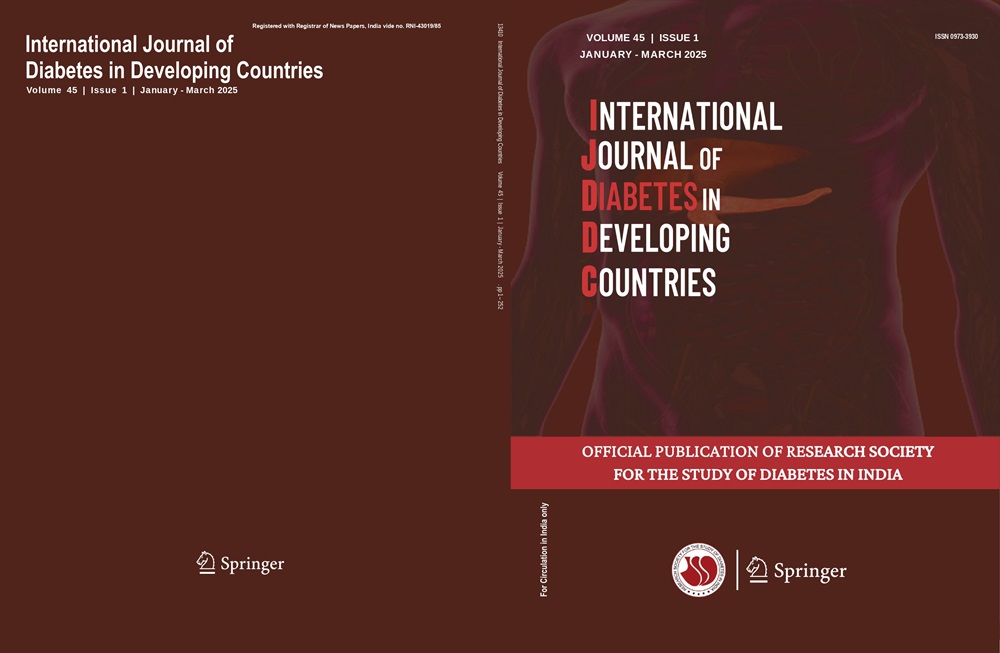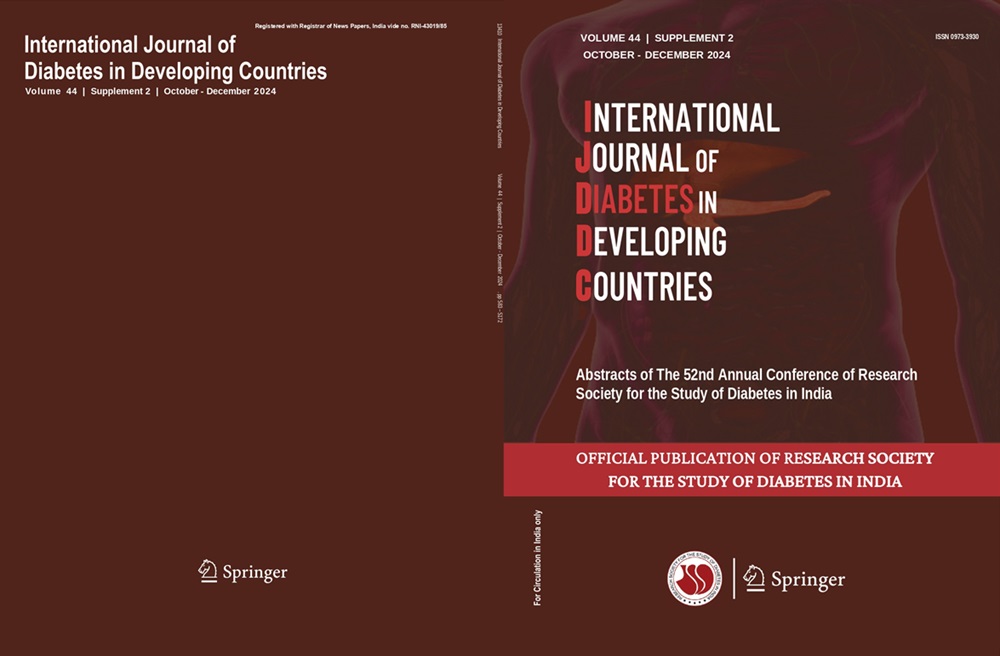Mohd Danish Khan, Mohammad Kaleem Ahmad, Roshan Alam, Geeta Jaiswal, Mohammad Mustufa Khan
Keywords
Abdominal obesity • Cardiovascular disease • Electrocardiogram • Glycated haemoglobin • MDRF-IDRS
Abstract
Introduction Type 2 diabetes mellitus (T2DM) and abdominal obesity are the principal foundation for the development and progression of cardiovascular disease (CVD) and its associated mortality. This study is aimed to analyse the utility of Madras Diabetes Research Foundation-Indian diabetes risk score (MDRF-IDRS) for the screening of T2DM and CVD.
Methodology In this cross-sectional study, total 300 samples were randomly included from the OPD (outdoor patient department), University Medical College, in and around areas of Lucknow. The parameters of MDRF-IDRS include age, waist circumference (WC), physical activity and family history of T2DM, and these were recorded for each subject. Glycated haemoglobin (HbA1c) and electrocardiogram (ECG) were also measured for the confirmation of T2DM and CVD. For statistical analysis, the p < 0.05 was considered as statistically significant.
Results In this study subjects, 135 (45%) were ≥ 50 years old, 124 (41.3%) have 1° abdominal obesity and 67 (22.3%) have 2° abdominal obesity, 91 (30.3%) were physically inactive and 101 (33.6%) have family history of either parent having diabetes, and 76 (25.3%) have family history of both the parent diabetic. According to MDRF-IDRS, 165 (55%) subjects were at high risk of T2DM (score ≥ 60). Based on HbA1c, 76 (25.3%) subjects were pre-diabetic and 165 (55%) subjects were found T2DM, of which 41 (53.9%) and 102 (61.8%) were at high risk of T2DM, respectively. Based on ECG, 147 (49%) subjects have normocardia, 58 (19%) subjects have bradycardia and 95 (31.6%) subjects have tachycardia, of which 55 (37.4%), 35 (60.3%) and 75 (78.9%) were at high risk of T2DM, respectively. A significant association was found between subjects with high risk of T2DM, elevated HbA1c and abnormal heart rate (p = 0.001, p = 0.003, respectively). Sensitivity (88%), specificity (64%), positive predictive value and negative predictive value for MDRF-IDRS validity are calculated. Receiver operator
characteristic curve (ROC) has been drawn and area under the curve (AUC) (0.780) is estimated.
Conclusion Result showed that the MDRF-IDRS is an efficient and cost-effective tool for the screening of abdominal obesity, T2DM and CVD. Presently, the MDRF-IDRS is necessity for bulk screening of disease at early stage in primary public healthcare centres to reduce the prevalence of T2DM, abdominal obesity and CVD and its associated mortality




